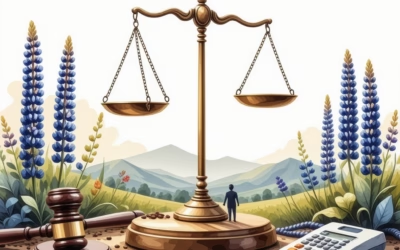Key Takeaways
- Discover vital government assistance programs available in 2022, including cash aid, food support, and housing resources.
- Learn how the American Emergency Fund provides immediate financial relief to low-income families affected by the pandemic.
- Access essential free resources such as SNAP, Medicaid, and TANF to improve your financial stability.
- Understand eligibility criteria for various programs to maximize your access to government help.
- Utilize state-specific resources, such as Georgia Gateway, for tailored assistance programs to meet local needs.
In 2022, navigating the landscape of government help can be a lifeline for many low-income individuals seeking financial support. This article delves into the various government assistance programs available, highlighting free resources, emergency funds, and cash assistance programs designed to alleviate financial burdens. We will explore essential questions such as, What free stuff can I get from the government? and What programs can I apply for to get money?, providing a comprehensive overview of the types of aid accessible this year. Additionally, we will discuss the American Emergency Fund, eligibility criteria for assistance, and state-specific resources, including government help in Georgia. Whether you are looking for immediate cash assistance or long-term support, this guide aims to equip you with the knowledge needed to access the help you deserve.
What free stuff can I get from the government?
Overview of Government Assistance Programs
There are numerous free resources and assistance programs available from the government that can help individuals and families in need. These programs are designed to provide essential support and improve the quality of life for low-income individuals. Understanding the various types of government assistance can empower you to access the benefits you qualify for, ensuring you receive the help you need during challenging times.
Types of Free Resources Available for Low-Income Individuals
Here’s a comprehensive overview of the types of free benefits you may qualify for:
- Food Assistance: Programs like the Supplemental Nutrition Assistance Program (SNAP) provide financial assistance for purchasing food. Additionally, the Women, Infants, and Children (WIC) program offers nutritional support for pregnant women and young children.
- Health Insurance: The Affordable Care Act (ACA) allows individuals to access free or low-cost health insurance through Medicaid or the Children’s Health Insurance Program (CHIP). These programs are designed to ensure that low-income families can receive necessary medical care.
- Housing Assistance: The U.S. Department of Housing and Urban Development (HUD) offers various programs, including public housing and housing choice vouchers, to help low-income individuals afford safe and decent housing.
- Utility Bill Assistance: The Low Income Home Energy Assistance Program (LIHEAP) helps eligible households pay for heating and cooling costs. This program is crucial for families struggling to keep their homes comfortable.
- Welfare and Financial Assistance: Temporary Assistance for Needy Families (TANF) provides financial assistance to families with children in need. This program aims to help families achieve self-sufficiency.
- Social Security Benefits: Social Security provides financial support to retirees, disabled individuals, and survivors of deceased workers. This program is essential for many Americans in need of financial stability.
- Government Checks and Payments: Various government programs offer direct payments to eligible individuals, including stimulus checks and child tax credits, which can provide significant financial relief.
For more detailed information on these programs and to determine eligibility, you can visit USAGov or consult local government resources. Additionally, platforms like Gov Guider can help navigate the various benefits available, ensuring you access the support you need. Always check official government websites for the most current information and resources.

What is this American emergency fund?
The American Emergency Fund, specifically the Pandemic Emergency Assistance Fund (PEAF), was established under the American Rescue Plan Act of 2021. This fund allocates $1 billion to support families in need who have been adversely affected by the COVID-19 pandemic.
Understanding the American Emergency Fund
The PEAF aims to provide immediate financial assistance to low-income families facing hardships due to the pandemic, helping them cover essential expenses such as food, housing, and healthcare. This fund is crucial for those struggling to make ends meet during these challenging times.
States, the District of Columbia, tribal governments operating a Temporary Assistance for Needy Families (TANF) program, and all five U.S. territories are eligible to receive these funds. This broad eligibility ensures that a wide range of communities can access support. The funds are distributed to state and tribal agencies, which then have the discretion to design their assistance programs tailored to the specific needs of their populations. This flexibility allows for a more effective response to local challenges.
The PEAF is part of a larger effort to mitigate the economic fallout from the pandemic, aiming to reduce poverty and provide a safety net for vulnerable families during this unprecedented crisis. For more information on the Pandemic Emergency Assistance Fund and its implementation, you can refer to the U.S. Department of Health & Human Services and the Administration for Children and Families resources, which provide detailed guidance and updates on the program.
How to Access Emergency Funds in 2022
Accessing emergency funds through the American Emergency Fund involves several steps. First, individuals should check their eligibility based on their state or territory’s specific guidelines. Each state may have different processes for distributing these funds, so it’s essential to stay informed about local resources.
- Visit your state’s social services website: Most states provide information on how to apply for emergency assistance programs, including the PEAF.
- Contact local agencies: Reach out to local agencies that manage TANF programs or other assistance initiatives. They can provide guidance on available resources.
- Prepare necessary documentation: Be ready to provide proof of income, residency, and any other required information to facilitate the application process.
- Apply promptly: Given the urgency of financial needs, it’s important to apply as soon as possible to ensure timely assistance.
For additional resources on government assistance programs, you can explore our Comprehensive guide to government assistance in 2022.
Which Program Helps Low-Income Individuals?
Low-income individuals can access a variety of programs designed to provide essential support. Here are some key programs that can help:
- Supplemental Nutrition Assistance Program (SNAP): This program assists low-income individuals and families by providing funds to purchase food. According to the USDA, SNAP benefits can significantly improve food security and nutrition among participants.
- Medicaid: Medicaid offers health coverage to low-income individuals, covering doctor visits, hospital stays, and long-term care. The Centers for Medicare & Medicaid Services (CMS) reports that Medicaid plays a crucial role in ensuring access to necessary medical services for those in need.
- Temporary Assistance for Needy Families (TANF): TANF provides financial assistance and support services to families with children. It aims to help them achieve self-sufficiency through job training and education programs. The U.S. Department of Health & Human Services highlights the importance of TANF in reducing poverty and promoting work.
- Housing Assistance Programs: Many states offer rental assistance programs, including rent rebates and public housing options, to help low-income individuals secure stable housing. The U.S. Department of Housing and Urban Development (HUD) provides resources and information on available housing assistance.
- Local and State Programs: In addition to federal programs, many states have their own initiatives to support low-income residents. These may include utility assistance, childcare subsidies, and job training programs. It’s advisable to check with local government websites or community organizations for specific resources available in your area.
For comprehensive information on these programs, individuals can visit the official U.S. government website or resources like Gov Guider, which can help navigate available assistance options tailored to specific needs.
Government Cash Assistance Programs for Low-Income Families
Government cash assistance programs are vital for low-income families seeking financial stability. These programs provide direct monetary support to help cover essential living expenses. Some notable programs include:
- Supplemental Security Income (SSI): This program provides cash assistance to individuals with disabilities and low-income seniors, ensuring they can meet basic needs.
- General Assistance (GA): Offered by various states, GA provides temporary cash assistance to individuals and families who do not qualify for other federal programs.
- Child Tax Credit (CTC): This tax benefit provides financial relief to families with children, helping to reduce poverty and support child-rearing expenses.
To learn more about these programs and how to apply, visit this comprehensive guide to government assistance in 2022.
What income gets government assistance?
Understanding the income requirements for government assistance programs is crucial for individuals seeking financial support. In 2022, various programs have specific eligibility criteria based on household income, which can significantly impact access to essential resources. Below, I outline the key factors that determine eligibility for government assistance programs.
Eligibility Criteria for Government Assistance Programs
To qualify for government assistance programs like SNAP (Supplemental Nutrition Assistance Program), household income must meet specific criteria. Here’s a detailed overview of income eligibility for SNAP benefits:
- Gross Monthly Income: For most households, the gross monthly income must be at or below 130% of the federal poverty line. As of federal fiscal year 2025, this threshold for a family of three is approximately $2,152 per month.
- Net Income Calculation: After gross income, deductions are applied to determine net income. Deductions may include expenses such as housing costs, childcare, and medical expenses for elderly or disabled members. The net income must be at or below 100% of the federal poverty line to qualify for benefits.
- Household Composition: Eligibility is also influenced by household size. Larger families have higher income limits. For example, a family of four has a gross monthly income limit of about $2,753.
- Asset Limits: In addition to income, SNAP has asset limits. Households may have up to $2,750 in countable resources, or $4,250 if at least one member is elderly or disabled.
- Special Circumstances: Certain groups, such as the elderly, disabled, or homeless individuals, may have different eligibility criteria or exemptions.
For the most accurate and personalized information, individuals can visit the official SNAP website or consult resources like Gov Guider, which provides guidance on government assistance programs.
Income Limits and Guidelines for 2022
In 2022, the income limits for various government assistance programs vary based on the type of aid and the state of residence. Here are some general guidelines:
- Temporary Assistance for Needy Families (TANF): Eligibility typically requires a family income below 200% of the federal poverty level, which translates to about $4,480 per month for a family of four.
- Medicaid: Income eligibility for Medicaid varies by state, but many states have expanded coverage to individuals earning up to 138% of the federal poverty level, approximately $1,563 per month for an individual.
- Low-Income Home Energy Assistance Program (LIHEAP): This program generally assists households with incomes at or below 150% of the federal poverty level, which is about $3,225 per month for a family of four.
For detailed information on specific programs and their income limits, I recommend checking the Government benefits information website or visiting Gov Guider for comprehensive assistance options.

What programs can I apply for to get money?
In 2022, various cash assistance programs are available to help individuals and families in need. These programs are designed to provide financial support for essential living expenses, ensuring that those facing economic hardships can access the resources they need. Below is an overview of some key cash assistance programs you can apply for:
Overview of Cash Assistance Programs Available in 2022
To access financial assistance programs, consider applying for the following government-supported initiatives designed to help with essential needs such as food, housing, and utility bills:
- Food Assistance Programs: The Supplemental Nutrition Assistance Program (SNAP) provides eligible individuals and families with funds to purchase food. According to the USDA, SNAP benefits can significantly reduce food insecurity.
- Unemployment Benefits: If you have lost your job, you may qualify for unemployment insurance, which offers temporary financial support while you seek new employment. Each state has its own application process and eligibility criteria.
- Welfare Benefits (TANF): The Temporary Assistance for Needy Families (TANF) program offers financial assistance and support services to low-income families. TANF aims to help families achieve self-sufficiency through job preparation and work opportunities.
- Emergency Housing Assistance: Programs like the Emergency Solutions Grant (ESG) provide funding for emergency shelters and services for individuals experiencing homelessness. This program can help cover costs related to housing instability.
- Rental Assistance: The Housing Choice Voucher Program (Section 8) assists low-income families in affording safe and decent housing in the private market. Participants pay a portion of their income towards rent, while the program covers the remainder.
- Utility Bill Assistance: The Low-Income Home Energy Assistance Program (LIHEAP) helps eligible households pay for heating and cooling costs. This program is crucial for maintaining energy affordability for low-income families.
- Home Repair Assistance Programs: Various local and state programs offer financial aid for home repairs to ensure safe living conditions. These programs can help with essential repairs and modifications for low-income homeowners.
For more detailed information and assistance in applying for these programs, you may visit Gov Guider, which can help guide you through the application processes and eligibility requirements.
Step-by-Step Guide to Applying for Government Funds
Applying for government funds can seem daunting, but following a structured approach can simplify the process. Here’s a step-by-step guide to help you navigate your application:
- Determine Eligibility: Review the eligibility criteria for each program you are interested in. This information is typically available on official government websites such as Benefits.gov.
- Gather Required Documentation: Collect necessary documents such as proof of income, identification, and any other relevant paperwork that may be required for your application.
- Complete the Application: Fill out the application forms accurately. Many programs offer online applications, which can expedite the process.
- Submit Your Application: Ensure that you submit your application before any deadlines. Keep a copy of your submission for your records.
- Follow Up: After submission, check the status of your application. You can often do this online or by contacting the program’s customer service.
By following these steps, you can effectively apply for the cash assistance programs available in 2022 and secure the financial support you need.
What is free cash in government?
Free cash in government refers to the surplus funds that remain from the previous fiscal year’s operating budget, which can be allocated for use in the current fiscal year. This surplus is derived from various sources, including:
- Local Receipts: These include revenues from car excise taxes, fees, and interest earned on investments that exceed initial budget estimates. For example, if a municipality anticipated $100,000 from car excise taxes but collected $120,000, the additional $20,000 contributes to free cash.
- Unspent Appropriations: Funds that were allocated but not fully utilized during the previous year can also add to free cash. For instance, if a department was budgeted $50,000 but only spent $40,000, the remaining $10,000 becomes part of the free cash.
- One-Time Revenues: Occasionally, governments may receive unexpected funds, such as grants or settlements, which can also enhance free cash.
Free cash is crucial for local governments as it provides flexibility in budgeting and can be used for various purposes, including funding capital projects, covering unforeseen expenses, or replenishing reserves. According to the Massachusetts Department of Revenue, maintaining a healthy level of free cash is essential for fiscal stability and effective financial management.
How to Qualify for Free Cash Assistance
Qualifying for free cash assistance typically involves meeting specific criteria set by local or state governments. Here are some common requirements:
- Residency: Applicants usually need to be residents of the state or municipality offering the assistance.
- Income Limits: Many programs have income thresholds that applicants must meet to qualify for assistance. These limits vary by program and location.
- Application Process: Individuals must complete an application, which may require documentation of income, residency, and other relevant information.
For more detailed information on free cash management and its implications, you can refer to resources from the Massachusetts Department of Revenue or similar governmental financial management guides.
Exploring Government Cash Assistance Programs
Government cash assistance programs are designed to provide financial support to individuals and families in need. These programs can vary widely by state and may include:
- Temporary Assistance for Needy Families (TANF): This program offers cash benefits to low-income families with children.
- Supplemental Nutrition Assistance Program (SNAP): While primarily focused on food assistance, SNAP benefits can also help families manage their overall budgets.
- General Assistance Programs: Many states offer general assistance programs that provide cash aid to individuals who do not qualify for other forms of assistance.
For a comprehensive overview of available programs, you can visit Gov Guider’s guide to government assistance in 2022.
Government help 2022 for individuals
In 2022, various government assistance programs are available to support individuals facing financial difficulties. These resources are designed to provide essential aid, helping people navigate challenging economic circumstances. Understanding the types of assistance available can empower individuals to access the help they need effectively.
Resources for Individuals Seeking Government Help in 2022
Individuals can access a range of government help programs in 2022, including:
- Cash Assistance Programs: These programs provide direct financial support to eligible individuals and families. Examples include Temporary Assistance for Needy Families (TANF) and Supplemental Security Income (SSI).
- Food Assistance: Programs like the Supplemental Nutrition Assistance Program (SNAP) offer food benefits to low-income individuals, ensuring they have access to nutritious meals.
- Housing Assistance: The Housing Choice Voucher Program (Section 8) helps individuals afford safe and decent housing by providing rental assistance.
- Healthcare Assistance: Medicaid and the Children’s Health Insurance Program (CHIP) provide health coverage for low-income individuals and families.
For more detailed information on these programs, you can explore the Comprehensive guide to government assistance in 2022.
State-Specific Assistance: Government Help 2022 Georgia
In Georgia, residents can access specific government assistance programs tailored to their needs. Key resources include:
- Georgia Gateway: This online portal allows individuals to apply for various assistance programs, including food stamps and Medicaid.
- Georgia Department of Human Services: Offers programs for low-income families, including cash assistance and child support services.
- Emergency Assistance Programs: Local agencies provide emergency funds for housing, utilities, and other urgent needs.
For more information on ongoing assistance programs in Georgia, visit the Ongoing government assistance programs page.




